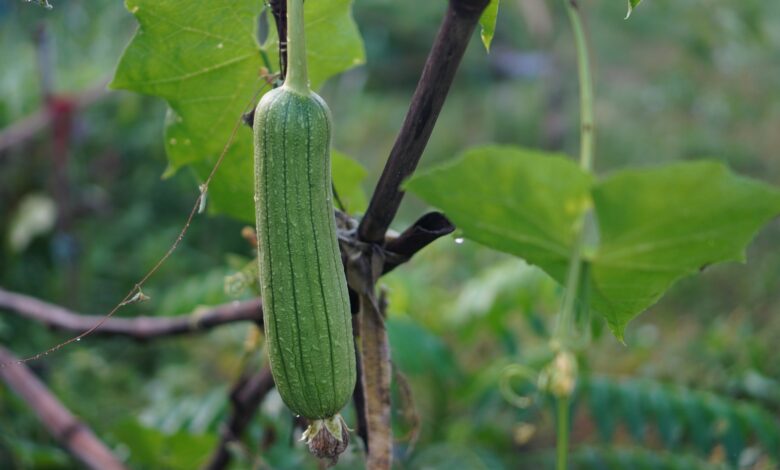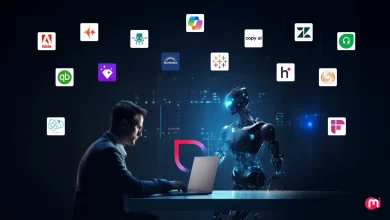A trip to the farm where loofahs grow on vines

The process of drying is crucial for the luffa to become the familiar exfoliating sponge we know. The gourd is left on the vine until it turns crispy brown and dry, indicating that the fibers inside have matured and are ready to be transformed into a useful tool for scrubbing and cleaning.
Once harvested, the luffa is peeled to reveal the fibrous network of veins that have been nourishing the seeds as the gourd grew. These fibers are what make the luffa such an effective exfoliator and cleaning tool. The tough outer skin is removed, leaving behind a lightweight, durable sponge that is perfect for scrubbing away dead skin cells and dirt.
In addition to its use as a bath accessory, luffa can also be used in a variety of other applications. The fibers are often processed into filters for water purification, insulation material, and even as a natural alternative to plastic mesh. The versatility of the luffa plant makes it a valuable resource for sustainable living and eco-friendly practices.
So the next time you reach for a loofah in the shower, remember that you’re not just using a sea sponge— you’re using a plant-based sponge that has been carefully cultivated and processed to provide a natural, effective way to care for your skin. And maybe consider exploring other uses for luffa beyond the bathroom, as this humble gourd has a lot more to offer than meets the eye. Luffa, also known as loofah, is a fascinating plant that undergoes a remarkable transformation when it’s time to harvest. Instead of rotting like most other produce, the luffa gourd turns from deep green to yellow to brown and hard. This process occurs as all the liquid and vegetable matter inside the gourd dries up, leaving behind a fibrous network of cellulose within the now-hard, shell-like skin. Once the luffa reaches this stage, it is ready to be harvested.
Harvesters typically crack open the dried skin of the luffa and shake out the seeds, which can be replanted for future growth. The gourd is then soaked in water for a few minutes to rehydrate the thin layer of vegetable residue on the underside, making it easier to slide the skin off. What remains is an airy, light, sponge-like network of plant fibers that make an excellent natural multi-purpose sponge. This unique texture is what makes luffa a popular choice among skincare enthusiasts.
It’s important to note that not all luffa are created equal. Imported luffa undergo heat treatments to prevent the spread of bugs, diseases, and other agricultural issues, which can damage the fibers and make them hard and less pliable. On the other hand, luffa grown in the U.S., like those from The Luffa Farm, do not require treatment and are softer, more versatile, and longer-lasting. They are also more resistant to bacterial growth, making them a more hygienic option.
Aside from exfoliation, luffa has a wide range of uses. Softer varieties can be used as facial sponges, dish sponges, pot scrubbers, and even for cleaning cars without scratching the finish. In addition, luffa has been used as insulation in mud brick houses, industrial filters, and may even have the potential to purify water. Furthermore, untreated luffa sponges are compostable, making them an eco-friendly alternative to synthetic sponges.
Overall, luffa is a truly multifunctional and sustainable plant with a variety of uses beyond just exfoliation. Its porous and durable nature, along with its compostable properties, make it a valuable natural product that continues to inspire innovation and creativity in various industries. The world is an ever-changing place, with new technologies, ideas, and innovations constantly reshaping how we live our lives. One of the most exciting developments in recent years is the rise of artificial intelligence (AI) and machine learning. These technologies have the potential to revolutionize industries, improve efficiency, and even change the way we interact with the world around us.
AI and machine learning are often used interchangeably, but they are actually two distinct concepts. AI refers to the development of computer systems that can perform tasks that typically require human intelligence, such as learning, problem-solving, and decision-making. Machine learning, on the other hand, is a subset of AI that focuses on developing algorithms that allow computers to learn from and make predictions or decisions based on data.
One of the most significant applications of AI and machine learning is in the field of healthcare. These technologies have the potential to transform the way medical professionals diagnose and treat patients, leading to more accurate and personalized care. For example, AI-powered algorithms can analyze medical images, such as X-rays or MRIs, to identify early signs of disease or abnormalities that might be missed by human eyes. This can help doctors make faster and more accurate diagnoses, ultimately improving patient outcomes.
In addition to healthcare, AI and machine learning are also making waves in industries such as finance, retail, and transportation. Financial institutions are using AI algorithms to detect fraud and manage risk, while retailers are using machine learning to analyze customer data and provide personalized recommendations. In the transportation sector, companies are using AI to optimize routes, improve logistics, and even develop self-driving vehicles.
Despite the many benefits of AI and machine learning, there are also concerns about their potential impact on jobs and society as a whole. Some worry that these technologies could lead to widespread job displacement, as machines become increasingly capable of performing tasks that were once done by humans. There are also concerns about privacy and security, as AI systems become more sophisticated and capable of collecting and analyzing vast amounts of personal data.
As we navigate this new era of AI and machine learning, it will be crucial for policymakers, industry leaders, and the public to work together to ensure that these technologies are developed and deployed responsibly. This includes implementing regulations to protect privacy and security, investing in education and training programs to prepare workers for the jobs of the future, and fostering a culture of innovation and collaboration that encourages ethical and transparent use of AI.
In conclusion, AI and machine learning have the potential to revolutionize industries, improve efficiency, and enhance our daily lives in countless ways. By harnessing the power of these technologies responsibly, we can create a future that is more connected, efficient, and equitable for all.





